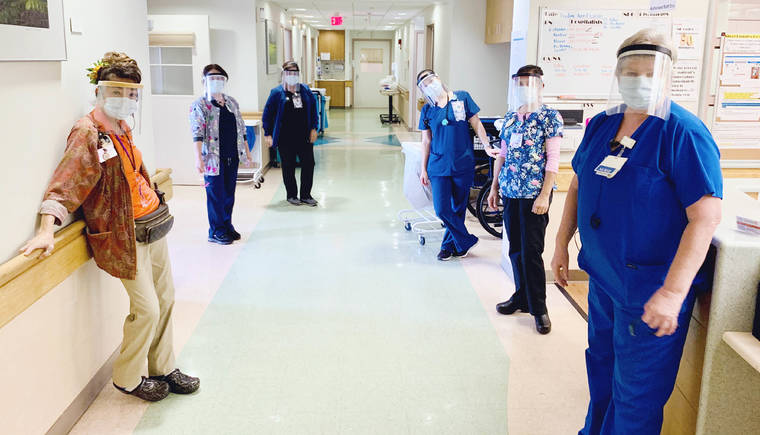LIHU‘E — State Department of Health Kaua‘i District Health Officer Dr. Janet Berreman remains cautiously optimistic about the stability of the island’s coronavirus cases.
The rising number of mainland coronavirus cases requiring hospitalization has caused logistical issues for both consumers and medical professionals in need of personal protective equipment like masks, equipment such as ventilators, and intensive care unit beds.
Kaua‘i has a total of 111 licensed hospital beds, nine ICU beds and 15 ventilators, according to statistics provided by the Healthcare Association of Hawai‘i.
Kaua‘i has enough equipment to meet the projected demand of patients requiring treatment for COVID-19, health experts say. But that could change.
“It is my understanding that our medical services’ suppliers have adequate supplies to meet the current needs of our community,” Berreman said. “That includes the materials needed for COVID-19 testing and patient care, as well as personal protective gear.”
As of press time Friday, Hawai‘i had a total of 553 cases, with Kaua‘i totaling only 21 of those cases, and a statewide number of nine recorded COVID-19-related deaths.
The state of New York, one of the earliest states stricken with the virus and the hardest hit, has experienced a shortage to handle the increasing demand of personal protective equipment.
New York has over 222,000 cases, with over 17,000 needing equipment and causing a shortage of necessary medical equipment, something the state of Hawai‘i and the island of Kaua‘i is trying to prevent.
“Although the situation is relatively stable on Kaua‘i at this time, we remain at risk,” Berreman said. “We could see more community transmission in the coming days and weeks.”
Hawai‘i, and Kaua‘i, continue to remain prepared for a potential outbreak, according to HAH spokesperson Stacy Wong.
“We are supplementing health-care organizations’ regular supply chains with our inventory from the federal Hospital Preparedness Program, supplies from the Strategic National Stockpile, and also direct purchases from manufacturers,” Wong said.
With federal, state and local officials all working together to try to reopen the economy, Kaua‘i could be at risk for the second wave, according to health experts, which could create an increased demand in medical equipment utilized to treat COVID-19.
“As the state explores a way to reopen our communities, we will be further at risk of travel-related reintroduction of the disease,” Berreman said.
Faith Campbell, marketing manager at Wilcox Medical Center, said the hospital is doing everything possible to anticipate an outbreak.
“It is important we are doing everything possible to keep its patients, staff and community safe and have sufficient supplies to provide PPE for staff that is appropriate for their role,” Campbell said in a written statement.
Using funding from the Hawai‘i Resilience Fund of the Hawai‘i Community Foundation, a team of engineers and emergency-room doctors are working on producing an effective bridge ventilator.
The company named Kahanu, which means “the breath” in the Hawaiian language, makes ventilators out of durable, sterilizable materials, and can be produced in Hawai‘i for about $1,200 each.
An affordable alternative to medical-grade ventilators can cost more than $25,000 each. A Kahanu ventilator can serve as a “bridge ventilator” that can be enlisted in an emergency to save a patient’s life, a press release states.
“We have consulted with both local and international medical experts and tested Kahanu in a large series of bench testing,” said Kai Matthes, M.D., Ph.D., who is a member of both the Kahanu team as well as the HiCOVID community task force, in a press release.
“Not only have we demonstrated the capabilities of our device, but we anticipate the potential need on the front lines of this pandemic,” Matthes said.
•••
Jason Blasco, sports reporter, can be reached at 245-0437 or jblasco@thegardenisland.com.






Thanks, healthcare workers. Not just for now, but every day. Are those N95 masks? If not, you should demand them. They are available. Huge percentage of transmission occurs at the point of care. Maybe you are saving them for when there are patients (that’s not meant to be snarky, just doesn’t look like an effective mask in the photo. I would keep my best masks for when they are really needed, too).
“licensed hospital beds”. When I was younger I got pulled over for operating a hospital bed without a license. Lesson learned.
“We could see more community transmission in the coming days”…more? could?